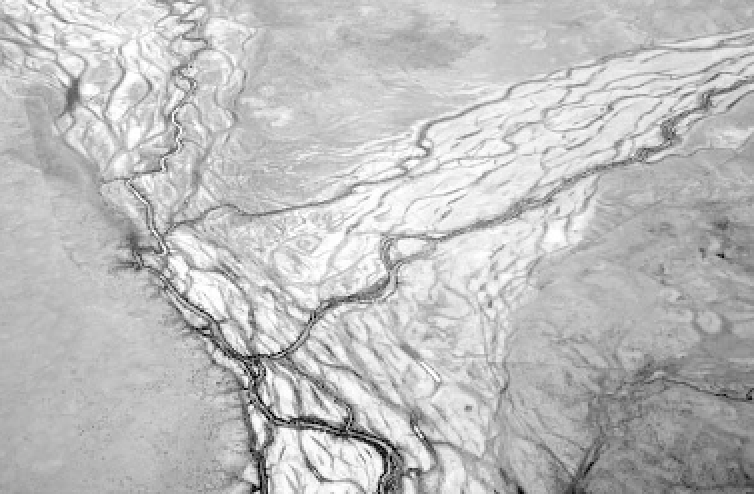Geology Reference
In-Depth Information
Plate 9.4
The junction of two anastomosing rivers, Queensland, Australia.
(
Photograph by David Knighton
)
Anabranching channels
them and declining downstream discharges (Tooth and
Nanson 1999).
Anabranching rivers
consist of multiple channels sep-
arated by vegetated and semi-permanent alluvial islands
or alluvial ridges. The islands are cut out of the flood-
plain or are constructed in channels by the accretion
of sediments. Anabranching is a fairly uncommon but
a widespread channel pattern that may affect straight,
meandering, and braided channels alike (Figure 9.1).
Conditions conducive to the development of anabranch-
ing include frequent floods, channel banks that resist
erosion, and mechanisms that block or restrict chan-
nels and trigger avulsions. The anabranching rivers of
the Australian interior seem to be the outcome of low-
angle slopes and irregular flow regimes. Those on the
alluvial plains of south-western New South Wales form
a complicated network along 100 km and more of
the Edward and Murray Rivers; for instance, Beveridge
Island is about 10 km long and lies between two
roughly equal branches of the Murray River. Those on
the Northern Plains near Alice Springs appear to be
a stable river pattern designed to preserve a through-
put of relatively coarse sediment in low-gradient chan-
nels that characteristically have abundant vegetation in
Hydraulic geometry
The controlling influence of discharge upon channel
form, resistance to flow, and flow velocity is explored
in the concept of
hydraulic geometry
. The key to this
concept is the discharge equation:
Q
=
wdv
where
Q
is stream discharge (m
3
/s),
w
is the stream
width (m),
d
is the mean depth of the stream in a cross-
section (m), and
v
is the mean flow velocity in the
cross-section (m/s). As a rule of thumb, the mean velocity
and width-depth ratio (
w
/
d
) both increase downstream
along alluvial channels as discharge increases. If dis-
charge stays the same, then the product
wdv
does not
change. Any change in width or depth or velocity causes
compensating changes in the other two components.
If stream width were to be reduced, then water depth
would increase. The increased depth, through the rela-
tionships expressed in the Manning equation (p. 71),

